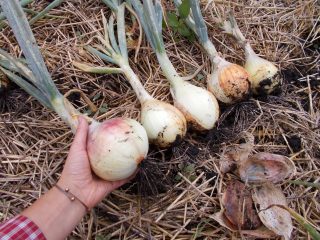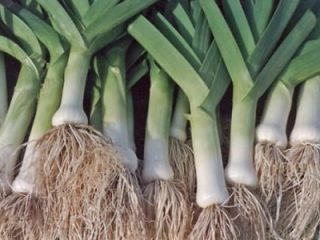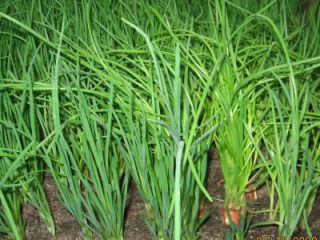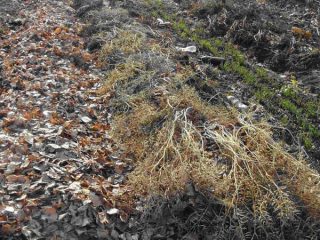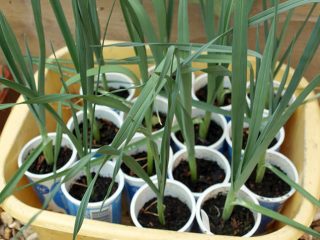Content
Monastic onion is a wonderful variety of a family variety of crop with excellent taste characteristics. The vegetable has a rich vitamin composition and is suitable for both growing heads and cutting feathers. The plant is cultivated as an annual or biennial crop.
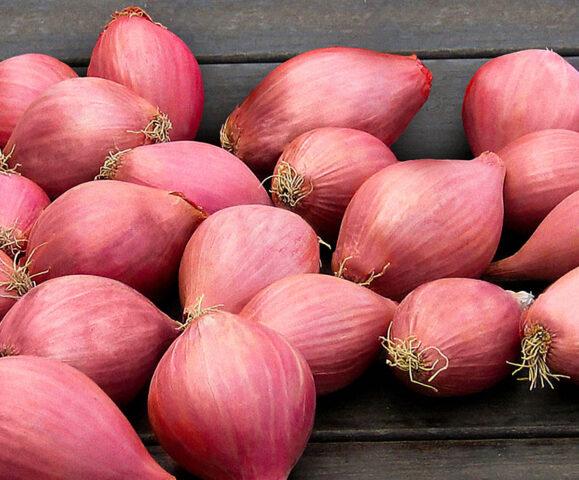
Most often, Monastic onions are grown from sets
Origin story
The birthplace of the Monastyrsky variety is Kostroma province. It was discovered by breeders near the ancient Ipatiev Monastery, in honor of which it received its name. Presumably, this particular variety of vegetable was grown by the monastery brethren several centuries ago. Currently, the crop is actively cultivated in many regions of Russia with different climatic conditions.
Description and characteristics of onion variety Monastyrsky
Monastic shallots are considered an early variety of the crop. The fruits of the variety are large heads of rounded-elongated shape, weighing 60-100 g. The color of the husk of the bulbs is pinkish, the flesh is white with a pink tint, medium density, aromatic and very juicy. The taste of the vegetable is spicy and pleasant.The pungency is weak, there is a sweetish aftertaste. Monastic onion has thin leaves of a rich green color, very delicate in taste. The variety gives excellent early cutting of feathers; it can be done several times during the entire growing season.
The main advantage of the crop is considered to be its high yield - up to eight heads can be placed in one nest. Since the variety is early ripening, its fruits begin to be harvested already 2.5 months after emergence or approximately 100 days after planting. From a square meter of plot, subject to all care rules, about 5 kg of vegetables are dug up.
When growing Monastyrsky onion as a two-year crop, in the first year it forms small bulbs weighing up to 30 g, and the next year a full-fledged harvest grows from the set.
Store vegetables in a dry, warm room. Monastic onions can be stored for up to 12 months without loss of quality.
Advantages and disadvantages
Monastyrsky shallots have a huge number of advantages and have proven themselves almost completely on the good side.
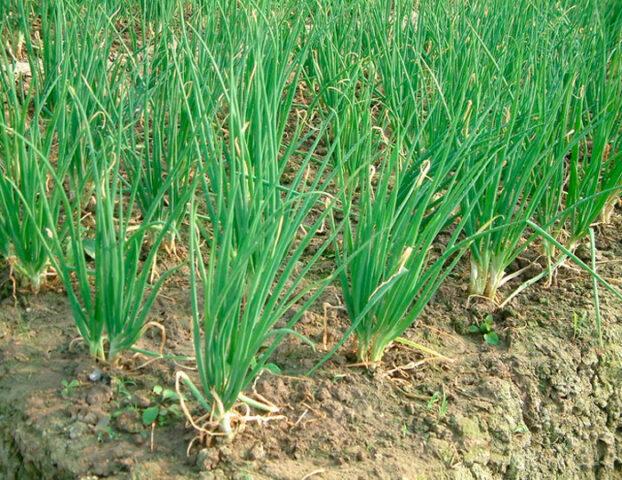
To grow the Monastyrsky variety, a vegetative planting method is used.
Advantages:
- high productivity;
- large sizes;
- keeping quality;
- amicable maturation;
- transportability;
- precocity;
- cold resistance;
- high immunity;
- dense structure.
Flaws:
- the need for regular feeding.
Planting the Monastery onion
Before planting Monastic onions, you should perform pre-sowing preparation. Experienced gardeners advise proceeding according to the following scheme:
- Warm the seed material near heating devices for a month.
- Three days before planting, disinfect the bulbs. Soak them for an hour in a solution of Trichodermin, potassium permanganate, or Fitosporin. After this, rinse with running water and let dry.
- Cut off the neck by 0.5 cm to prevent the development of rot on the new harvest.
- Remove part of the bottom down to living tissue.
- Place the heads on the film in one layer, spray with complex fertilizer from a spray bottle. Transfer to a container and cover with film with holes. Let stand until roots appear.
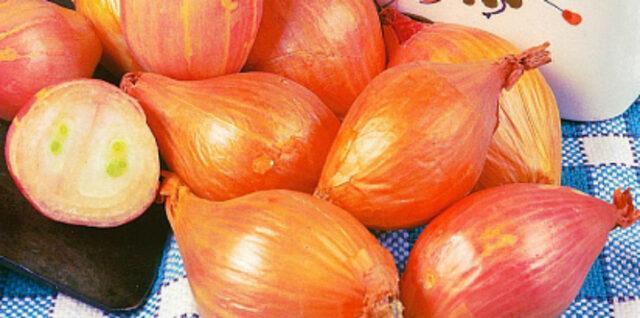
Bulbs grown from halves have a longer shelf life
In addition to preparing seedling material, the soil should be prepared before sowing Monastyrsky onions. The culture prefers neutral ground. Does not tolerate waterlogging and does not tolerate heavy and acidic soil well. Grows well in areas where garlic or onions have not been planted before. Before sowing, while digging the beds, humus and mineral fertilizers are added to them. Add ash, chalk or dolomite flour to acidic soil a couple of weeks before planting. Potassium sulfate is added to alkaline soil.
Monastic onions are planted when the ground warms up to a temperature of +5-7 °C. This usually occurs in April or early May. The heads are placed at a distance of 27-30 cm, the row spacing is about 25-35 cm. If you plan to grow the crop for greens, then the interval between the bulbs is about 10 cm, the distance between the rows is 15 cm.
Caring for the Monastery Bow
The Monastic bow is not very demanding in care. It requires infrequent watering and should be done with cold water. As necessary, the beds need to be loosened, weeded, and mulching is allowed. Only the mulch should be raked away from the bulbs so that the nests do not rot.
The Monastic onion is fed at least twice a season. Fertilizers are applied for the first time three weeks after planting. It is wise to water the crop with freshly prepared ammonium sulfate, diluted according to the instructions. The next feeding is carried out a month before harvest. Phosphorus and potassium are added to the soil. A couple of times during the growing season it is useful to water the Monastic onion with EM preparations, this way you can provide the crop with protection from infections.
It is worth noting that when growing in beds, the number of bulbs in the nest should be normalized. Remove a few at a time when the plant produces five leaves. This is done to ensure that the fruits are large in size.
2-3 weeks before harvesting, stop watering the crop and scrape away the soil from the nests so that the heads are on the surface. When the onion (feather) begins to turn yellow and fall on the bed, you can start digging up the crop. This is done on a dry day; the roots and feathers are not cut off. The collected Monastic onion is laid out under a canopy for at least three weeks, after which the roots and leaves are cut off, leaving 5 cm of the root collar. Place the heads in boxes with holes and store them in a room with a humidity of 50-70% and a temperature of +18-20 °C.

The variety loves fertilizers based on potassium, nitrogen and phosphorus
Conclusion
Monastic onions are very popular among domestic vegetable growers. You can hear a lot of positive reviews about it. The crop is quite hardy and productive, easy to grow.The vegetable can be used both fresh and for preparing various dishes that are subject to heat treatment.
Reviews from gardeners about Monastyrsky onion
